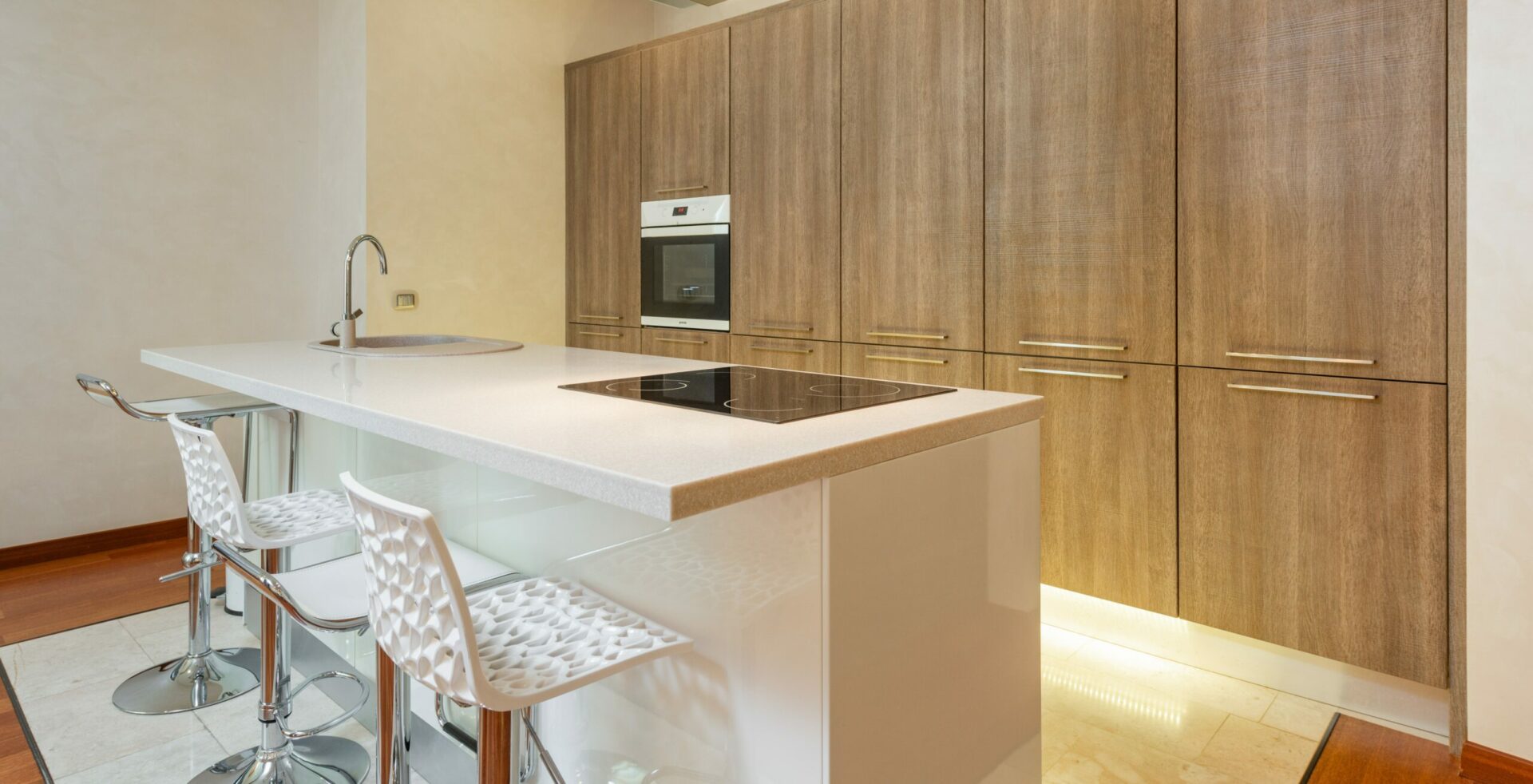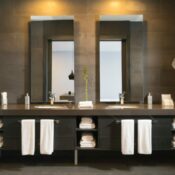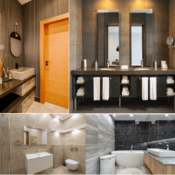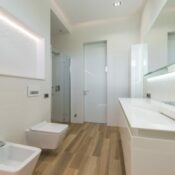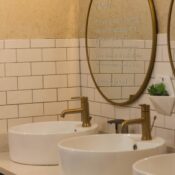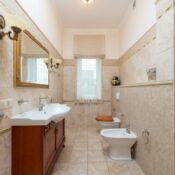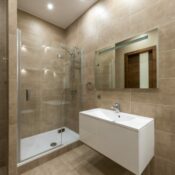Vanities have such a big impact on the bathroom. Not only do these make the bathroom space more attractive, but they also make cleaning easier and reduce clutter by providing additional storage space for accessories. Besides, bathroom vanities provide a functional space for tooth brushing, putting on makeup, shaving and undertaking other bathroom-related activities. However, like they say, all good things come at a price; and bathroom vanities are no exception. If you wonder why are bathroom vanities so expensive, you hit the right article! Read on to find out more…
Why Are Bathroom Vanities So Expensive
| Bathroom vanities tend to be very expensive due to all the design, material quality and sizes that go into it. The type of manufacturing process used for the bathroom vanity also contributes greatly to the high price of the end product. Since each of these factors play a role in determining the cost of the vanity, there is no one-size-fit all price for all bathroom vanities. |
RELATED = = = > Do You Tile Behind a Wall Hung Bathroom Vanity Unit?
Now, let’s look into how each of these factors affect the final cost of the bathroom vanity:
1. Design of Bathroom Vanities
There are two main styles of bathroom vanities: built-in vanities and freestanding vanities. Freestanding vanities are usually installed in small bathrooms. For example, they are a popular choice for bathrooms where the shower and bathtub are installed separately, leaving little space for the vanity. A freestanding vanity would fit perfectly in the limited space without giving a cramped or congested look in the bathroom. These types of vanities are easy to install and do not require a lot of space, which makes them relatively cheap and affordable.
On the other hand, built-in vanities have a lengthy and more involved installation process. Besides, they take up more space, which is why they are recommended for larger bathrooms with more available space. Not only are these types of bathroom vanities sold at more expensive prices, but the cost of installation also tends to be higher due to all the work involved in setting up.
Pretty Colored Bathroom Vanity Ideas to Beautify Your Bathroom
Another cost determinant for the bathroom vanity is the type of vanity you choose. There are three main types of vanities: custom, semi-custom and prefab vanities. Custom vanities are the most expensive due to all the work that goes into designing, manufacturing and installing them, while prefab vanities are the cheapest. Here is a breakdown of the average costs of each of these three types of bathroom vanities:
- Custom vanities – $500 to $2,800
- Semi-custom vanities – These are quite similar to custom bathroom vanities, also ranging from $500 to $2,800
- Prefab vanities – $200 to $2,000 (with most prefab bathroom vanities go for $300 to $800)
Also, how much the bathroom vanity goes for is determined by how the package comes. For example, you may choose to purchase the sink and the countertop separately. While this would give you more options for design and allow you to create a unique bathroom of your choice, buying the elements separately would cost you more money. On the other hand, buying the sink and top as a single package would cost less money, but limit you to the design options you can choose.
RELATED = = = > How Much Should You Spend on a Bathroom Vanity?
2. Material Quality of Bathroom Vanities
Bathroom vanities come in a wide range of materials. The bathroom vanity, drawers and cabinets are usually made of composite materials, wood and even metal for some modern bathrooms. There are also plenty of materials available for the countertop, such as quartz, marble, laminate, granite, fire clay and lavastone. And it goes without saying that, the better the quality of the material used to make the vanity or countertop, the more expensive the end product will be.
Consider the four most common materials used to make bathroom vanity cabinets and how these impact the price of the vanity:
A. Solid Wood
Solid wood is the most expensive, strongest and most durable material used to make bathroom vanity cabinets. The material offers two options of solid wood material: solid hardwood or 100% natural wood. Some of the most popular types of wood used in the construction of these cabinets are oak, poplar and teak. Oak is the strongest wood and it is used to manufacture long-lasting vanities for the bathroom. Poplar and teak also offer quality products, creating that traditional, timeless look that other materials cannot provide.
Also, since solid wood has such great strength, you can install any countertop material of your choice. For example, the material perfectly supports heavy-weight marble and acrylic countertops, without sinking or being weighed down. The only downside about solid wood is that it shrinks and expands with changes in humidity levels. So if you choose a bathroom vanity made of solid wood, use a vent fan to keep the humidity levels under control and ensure the vanity retains stunning natural finishing for many more years to come.
B. Plywood
Plywood is more expensive than MDF and particleboard, but relatively cheaper than solid wood material. Usually, wood veneers are bonded together, creating stacked sheets which make the plywood material. While the material has great variation in the grade and thickness, it offers such great strength and sturdiness for bathroom vanities.
Therefore, plywood is the ideal choice for homeowners who wish to strike a balance between aesthetics and affordability. And unlike solid wood, the material is not affected by changes in humidity levels, temperature or wetness in the bathroom. Still, if veneered, plywood vanity cabinets may start feeling or chipping.
RELATED = = = > Why Do Bathroom Vanities Have Legs?
C. Medium Density Fiberboard (MDF)
MDF is a more cost-effective option for homeowners on a tight budget. It is cheaper than solid wood and plywood materials. And while it is more expensive than particleboard, it offers more density and strength than the former. MDF material consists of small bits of wood and composite fibers bound together with was or resin.
Unlike solid wood, MDF bathroom cabinets do not shrink or expand as humidity changes; an aspect that makes them a popular choice in the furniture business. However, it is advisable that you always seal MDF vanities and ventilate the bathroom properly. Otherwise, if water was to penetrate the surface of the material, it would lead to damaging of the bathroom vanity. Also, even though MDF works well with almost all lacquered paints, it cannot be stained.
Choosing Durable Materials For A Bathroom Vanity
D. Particleboard
Particleboard is the cheapest material available for bathroom vanities. It is made of wood particles bound together by glue, then heated and pressed to create a thin composite sheet material. The strength of the material varies depending on the density of the sheets used and the size of the wood particles added.
Particleboard materials are very weak and can barely support the weight of solid materials, such as granite and quartz. Also, countertops that have more weight may cause the vanity to begin sagging. This is why it is always advisable to choose lighter countertop materials, such as acrylic, on bathroom vanities made of particleboard material. Also, the material is vulnerable to water, steam and heat. And if compromised, the material may cost you even more to repair the damage or replace it.
3. Size of Bathroom Vanities
Most bathroom vanities come in a standard size of between 18 inches to 72 inches. The most popular dimensions for single bathroom vanities are 24″, 30″, 36″ and 48″, while double vanities come in widths of 60″ and 72″. Still, you can find a double vanity with a width of 48″. As for the depth, most bathroom vanities have a standard depth dimension of 20″; even so, you can find narrower versions of lesser depth. The larger the size of your bathroom vanity, the more expensive it will be. After all, larger vanities call for more labor and detailed installation, which leads to increased costs.
FAQ
Which is the Best Bathroom Vanity Size?
The 48″ inch bathroom vanity is the most recommended for all types of bathrooms. This particular size comes with gorgeous designs that compliments many bathroom themes. Besides, the size offers the option of both single and double sinks, allowing you to personalize your bathroom space so that it fits your exact needs and preferences.
What is the Average Cost of Bathroom Vanities?
The price of bathroom vanities range from $300 to $800. Still, you can find inexpensive vanity options of under $200, although these tend to be quite small and basic. Bathroom vanities made of high-end materials, such as lavastone, marble and granite are usually more expensive, with their prices ranging over $1,000. Besides the cost of the vanity materials, you will also need to cater for the installation and labor costs of the bathroom vanity.
Do Bathroom Vanities Increase Your Home Value?
Yes, bathroom vanities increase the overall value of the home. In fact, high-end vanities can increase your home value by up to 3%!
Conclusion
Bathroom vanities come in a wide range of sizes, shapes, designs and even prices. There is always a bathroom vanity for all people, whether you are looking to splurge your money or save on costs. Why are bathroom vanities so expensive? The varying pricing of bathroom vanities is mainly dependent on the design, material and size of the vanity. Therefore, when looking to purchase a good vanity for your bathroom, make sure to consider these 3 key factors to help you determine how much you will need to spend on your preferred vanity!
READ ME NEXT = = = > Can I Wash Clothes With Just Water?
